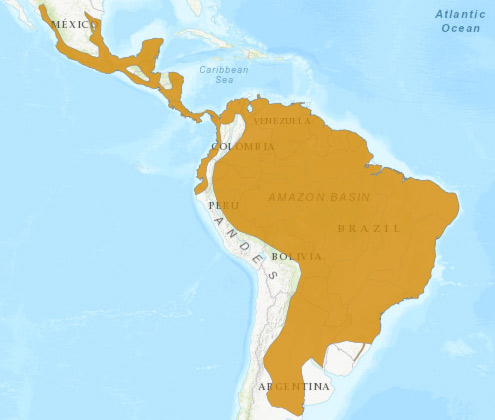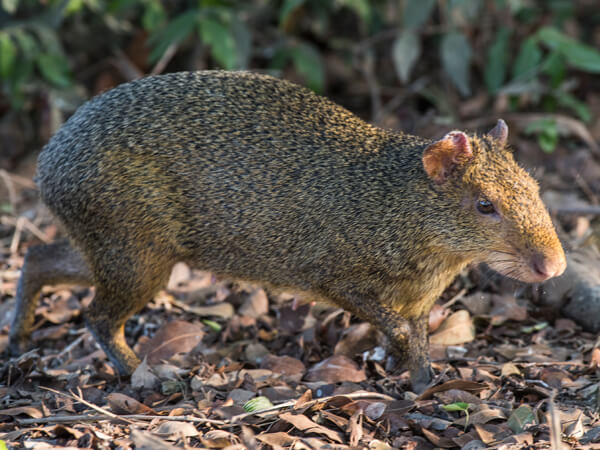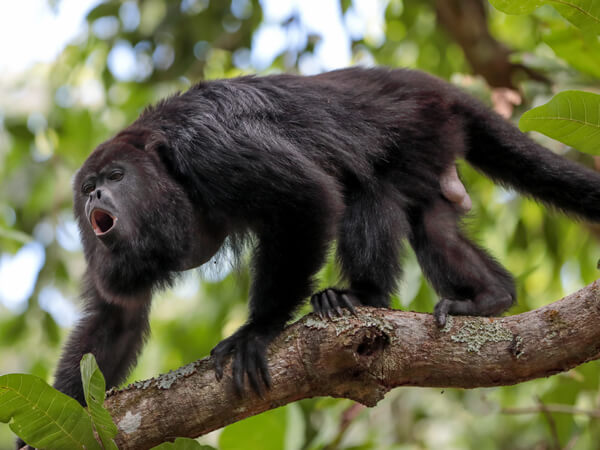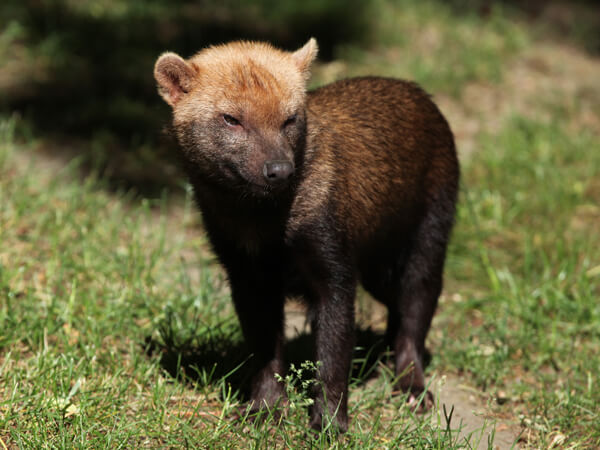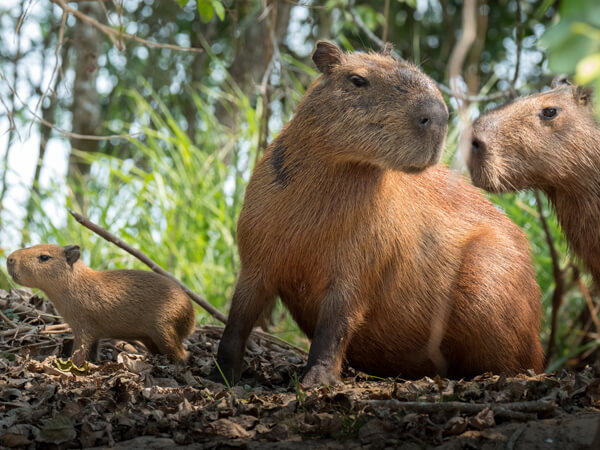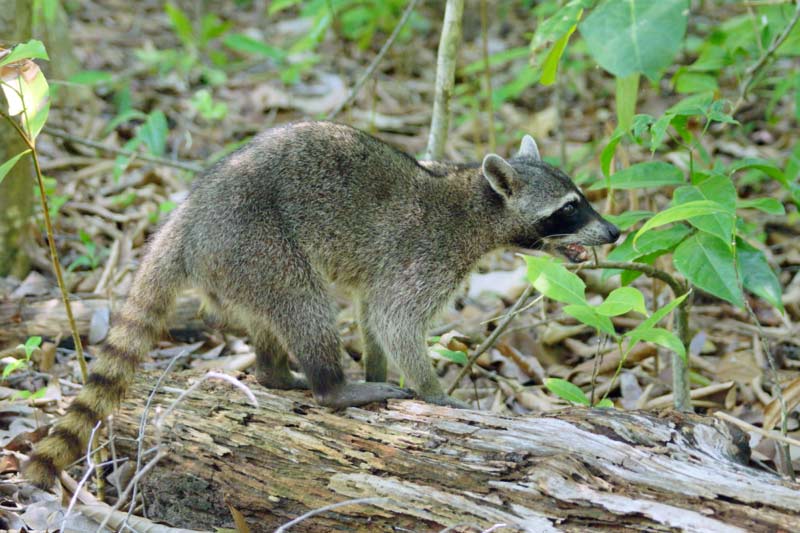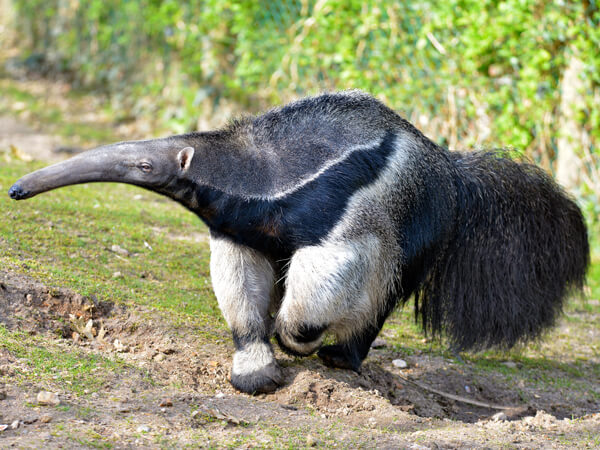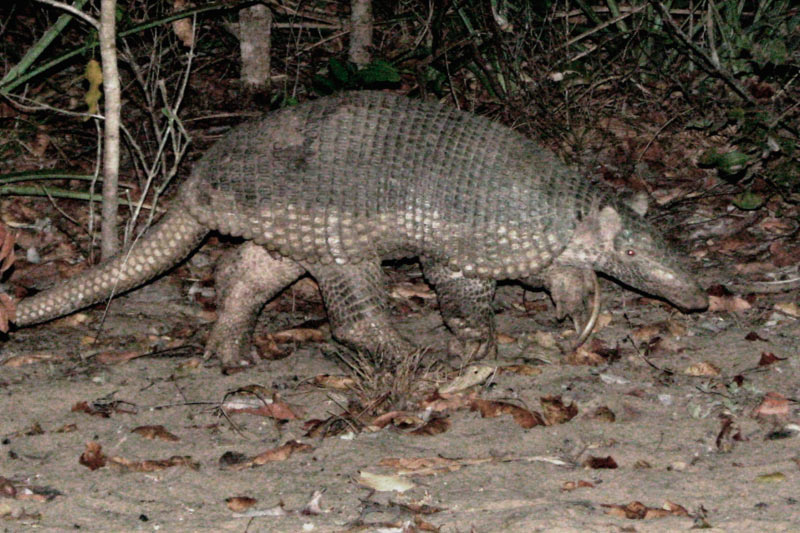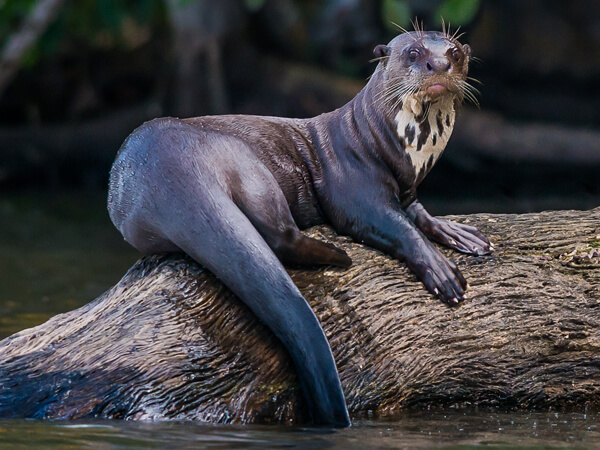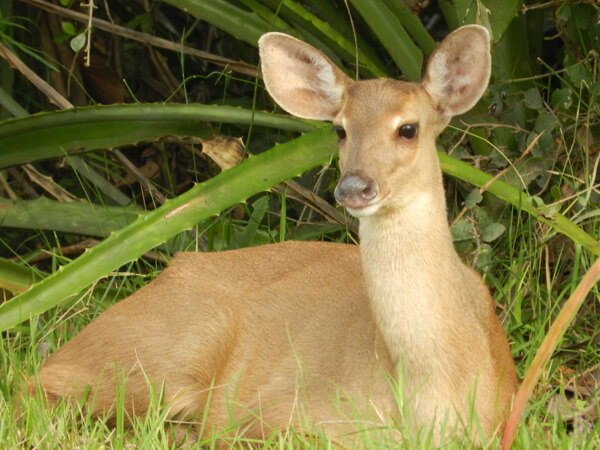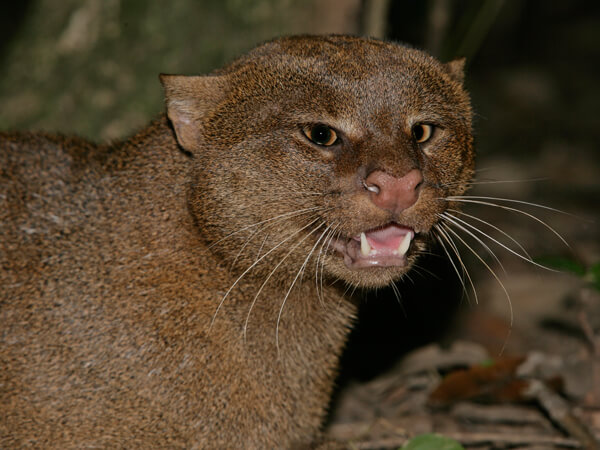The jaguarundi can be confused with weasels or the eyra. However, the jaguarundi has a more elongated body than other neo-tropical wild cats, and has diurnal habits. Although their population is spread throughout much of Brazil’s territory, the population density is low.
Click to learn more
Distribution
The species is widely distributed throughout the Americas, occurring from Mexico to central Argentina, and is present in almost all of Brazil, but at low population densities. The jaguarundi is found in a variety of habitats, including rainforests, savannas, scrub and wetlands, and found in all Brazilian biomes.
Features
The jaguarundi measures from 48 to 83 centimeters in length, with its tail measuring between 27 and 59 centimeters. Weighing in at 3.7 to 9 kilograms, males are larger than females. The color ranges from black and brown to gray, sand and reddish-brown, with common intermediate and melanin colors. It has short legs and a similar appearance to the mustelid. Their eyes have round pupils instead of the more elliptical pupils of other cats, which may be a reflection of their daytime habits.
Behavior
Unlike most wild cats, jaguarundis prefer to hunt during the day when they are at their most active. They start moving just before dawn and remain active until just after sunset. Although they are very skillful at navigating trees, they prefer to hunt on the ground. Generally, they are animals of solo habits but will tolerate the presence of other individuals in their territory. In nature, most of our observations are of solitary individuals, but they can become quite sociable when in captivity.
Food
Jaguarundis eat practically anything, ranging from small to medium-sized mammals, snakes, lizards, birds, insects, fish and amphibians.
Reproduction
The gestation period varies between 65 and 75 days, and jaguarundis generally give birth to between one and four cubs. They do not have a well-defined period for playing behavior, and play can occur throughout the year. They reach sexual maturity at around two years old.
Conservation
Although regarded as “low concern” by the IUCN, they are considered as “vulnerable” by the national list of the ICMBio. They are not subject to the same level of hunting pressure as small tabbies, and can live in habitats modified by humans. However, estimates predict a decrease in their population by 10% in the coming years, mainly due to the loss and fragmentation of habitats.

